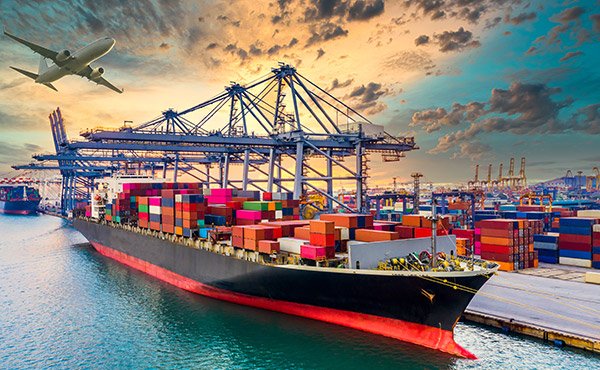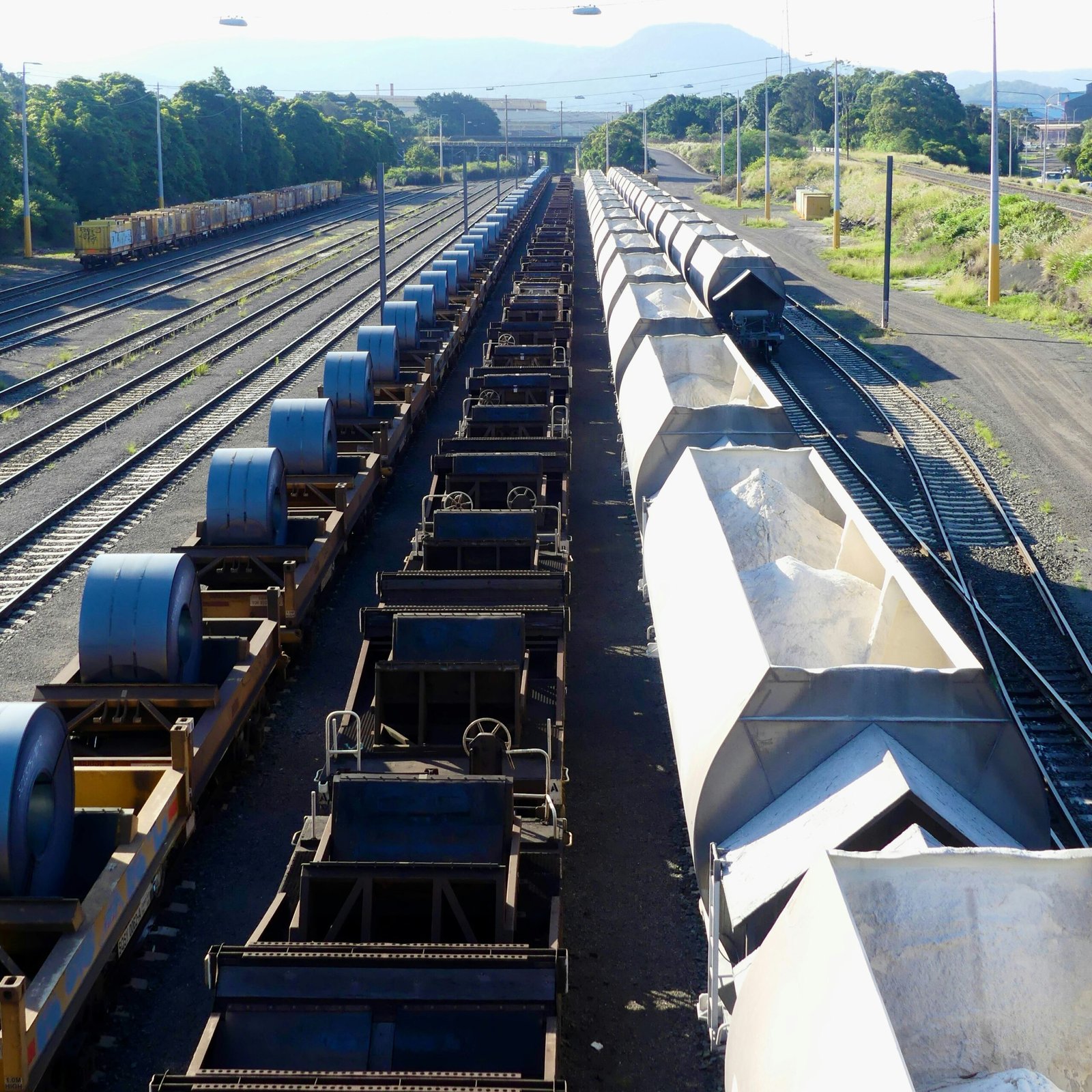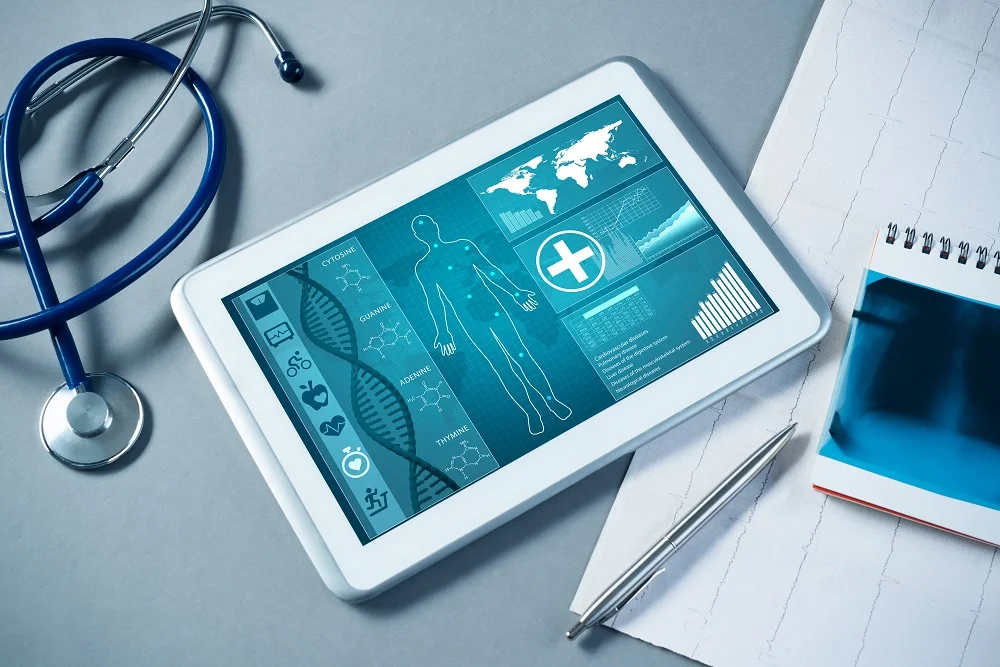Introduction to Raw Material Sourcing
Effective raw material sourcing serves as a foundational element in the manufacturing industry.
It refers to the process of identifying, procuring, and maintaining the materials necessary for production, which can range from metals and plastics to textiles and chemicals.
For manufacturers, the quality of raw materials directly influences the final product, affecting both performance and durability.
Consequently, ensuring a reliable supply of high-quality materials is crucial for achieving the desired product specifications.
The significance of sourcing raw materials is multifaceted. First, it plays a pivotal role in cost management.
By carefully selecting suppliers and negotiating favorable terms, manufacturers can optimize their expenditure on materials, leading to increased profitability.
Furthermore, fluctuations in raw material prices can have substantial impacts on manufacturing budgets.
Hence, effective sourcing strategies can help mitigate risks associated with price volatility, ensuring that manufacturers maintain competitive pricing in the marketplace.
Besides cost implications, the sourcing of raw materials can significantly affect quality assurance.
Manufacturers aiming to export from India, for instance, must adhere to strict quality control standards to meet both domestic and international regulations.
Any lapses in material quality not only jeopardize production efficiency but can also lead to reputational damage and legal repercussions.
Therefore, aligning with reputable suppliers that offer consistent quality is paramount for manufacturers looking to excel in their respective markets.
Moreover, the sustainability and ethical aspects of raw material sourcing are gaining prominence.
Consumers are increasingly inclined to support brands that prioritize environmentally responsible practices and ethical sourcing.
Thus, incorporating sustainable sourcing strategies not only reflects positively on a manufacturer’s brand image but may also improve their marketability.
In essence, effective raw material sourcing is integral to establishing a robust manufacturing framework, influencing the entire production cycle from inception to delivery.
Impact of Raw Material Quality on Production
The quality of raw materials plays a pivotal role in the manufacturing process, influencing various aspects of production efficiency and product reliability.
High-quality raw materials lead to a more streamlined manufacturing process, reducing the occurrence of defects and downtimes, which can significantly impact an organization’s ability to export from India.
Manufacturers that prioritize top-tier materials often find themselves with fewer production interruptions, increasing overall output and allowing for a more cost-effective operation.
When raw materials meet stringent quality standards, the benefits extend beyond mere production efficiency.
The end products are often more durable and reliable, which is crucial for maintaining a company’s reputation in competitive markets.
For instance, in industries such as automotive or electronics, the quality of materials directly correlates with the longevity and safety of the final product.
Poor-quality materials, on the other hand, can lead to catastrophic failures, necessitating recalls and damaging brand trust.
Sourcing high-quality materials from reputable suppliers can serve as a significant competitive advantage. It allows manufacturers to leverage superior inputs that not only enhance product performance but also optimize the entire manufacturing process.
This includes improvements in workability, reduced wear-and-tear on machinery, and lower rates of waste generation.
Ultimately, a focus on quality raw material sourcing supports sustainable manufacturing practices and positively affects the bottom line.
It becomes evident that manufacturers who aim to excel in the global marketplace, including those looking to export from India, must recognize the intrinsic value of high-quality raw materials, not merely as an operational necessity but as a strategic imperative for growth.
Cost Implications of Raw Material Sourcing
The financial landscape of manufacturing is heavily influenced by raw material sourcing decisions.
When manufacturers engage in the process of acquiring materials, they encounter various cost factors that can significantly impact their overall production expenses.
The choice of suppliers is paramount; selecting reliable vendors not only affects the quality of inputs but also influences pricing strategies.
Engaging with suppliers that offer competitive pricing and favorable payment terms can facilitate better cash flow management, thereby reducing the financial burden on manufacturers.
Negotiation tactics play a critical role in raw material sourcing as well.
Effective negotiation can lead to cost savings, allowing manufacturers to secure better prices without compromising on quality.
Strategies may include bulk purchasing agreements or long-term contracts that stabilize prices over time. Furthermore,
manufacturers should remain adaptable and vigilant in seeking alternative suppliers, especially in times of market volatility.
This approach can provide leverage in negotiations, ensuring that costs remain manageable.
The selection of materials also impacts the total cost of manufacturing. High-quality raw materials can often result in higher initial costs, but they can lead to reduced waste, fewer defects, and ultimately, lower costs over the product lifecycle.
Therefore, it is essential for manufacturers to find a balance between cost and quality when making material choices.
Adopting innovative sourcing strategies, such as local sourcing or sustainable materials, can further enhance cost-efficiency while promoting environmental responsibility.
In summary, the cost implications of raw material sourcing are complex and multifaceted.
Careful consideration of supplier selection, negotiation tactics, and material choice can lead to significant financial benefits for manufacturers.
By strategically managing these aspects, manufacturers can optimize their operations and remain competitive in an increasingly global market where the ability to export from India is vital for many businesses.
Therefore, making informed sourcing decisions not only reduces costs but also enhances overall operational effectiveness.
Sourcing Strategies for Manufacturers
Effective raw material sourcing is critical for manufacturers seeking to maintain a competitive edge in their respective markets.
As the demand for quality products increases, manufacturers must adopt robust sourcing strategies that not only cater to their immediate needs but also ensure sustainability in the long run.
One effective approach is direct sourcing, which involves obtaining materials straight from the producers.
This method can minimize costs by eliminating intermediaries and can foster direct relationships with suppliers.
By doing so, manufacturers can negotiate better terms and ensure the quality of raw materials, which is essential for producing high-quality goods.
Another crucial consideration is the choice between local and international sourcing. Local sourcing can significantly reduce lead times and shipping costs, along with benefits such as easier communication and reduced carbon footprints.
Conversely, international sourcing may open doors to a wider variety of raw materials, often at lower prices.
However, it could involve challenges, such as longer lead times and potential quality control issues.
Thus, manufacturers must carefully evaluate their specific needs and market conditions to decide the most appropriate approach.
Furthermore, building long-term relationships with suppliers is a strategy that can lead to a more reliable supply chain.
Establishing trust with suppliers often results in preferential treatment during shortages, better prices, and increased flexibility to accommodate changes in order sizes.
Over time, these relationships can create a mutually beneficial partnership, allowing manufacturers to secure consistent access to high-quality materials.
Ultimately, implementing a combination of these sourcing strategies will enable manufacturers to optimize their raw material procurement processes, thereby supporting their overall business objectives and enhancing the capability to export from India or other regions effectively.
Risks Associated with Poor Sourcing Practices
Manufacturers rely heavily on effective sourcing practices to maintain efficiency and quality in their production processes.
However, when inadequate sourcing strategies are employed, several risks can arise, significantly impacting operational performance.
One of the primary risks is supply chain disruptions, which can occur due to various factors such as political instability, natural disasters, or logistical challenges.
For instance, manufacturers that source raw materials from unstable regions may find their supply lines interrupted, leading to unexpected delays and increased costs.
Inconsistent material quality is another major concern linked to poor sourcing practices.
When manufacturers do not thoroughly vet their suppliers or engage in reliable supplier agreements, they may encounter materials that do not meet the specified standards.
This inconsistency can directly affect the final product’s quality, leading to increased waste and, ultimately, customer dissatisfaction.
Consistently poor quality can damage a manufacturer’s reputation and lead to a decline in market competitiveness, adversely affecting their ability to export from India effectively.
Furthermore, these risks can have a domino effect on production timelines.
In instances where sourcing issues arise, manufacturers may need to halt production to resolve the quality or availability of raw materials.
Such delays can result in missed deadlines and lost orders, which can be detrimental to a manufacturer’s relationships with retailers and clients.
Consequently, establishing a comprehensive sourcing strategy that identifies and mitigates these risks is vital for manufacturers aiming to maintain efficient operations and satisfactory product quality.
Ultimately, the significance of effective raw material sourcing transcends immediate procurement concerns; it shapes the overall competitiveness and sustainability of the manufacturing sector.
By prioritizing robust sourcing practices, manufacturers can better position themselves to navigate the complexities of the global market.
Sustainability in Raw Material Sourcing
In recent years, sustainability has emerged as a crucial consideration in the raw material sourcing decisions of manufacturers across various industries.
As the global demand for eco-friendly practices increases, companies are increasingly seeking to minimize their environmental impact by adopting sustainable sourcing methods.
This shift not only supports ecological preservation but also meets the rising consumer expectation for ethical and environmentally responsible practices.
Eco-friendly sourcing practices can take various forms. For instance, manufacturers might prioritize the use of renewable raw materials or opt for suppliers that implement sustainable harvesting techniques.
Furthermore, incorporating recycled materials into their production processes not only reduces waste but also promotes a circular economy.
These practices are becoming more prevalent as businesses recognize that sustainable sourcing can enhance their brand reputation and correspondingly increase their market share.
Ethical sourcing plays a pivotal role in the sustainable sourcing landscape.
Manufacturers are increasingly expected to ensure that their raw materials are sourced from suppliers who adhere to fair labor practices, respect human rights, and contribute positively to local communities.
By aligning sourcing strategies with environmental and social responsibility goals, businesses can enhance their corporate social responsibility (CSR) initiatives while fostering trust and loyalty among consumers.
This alignment not only reflects a commitment to sustainability but also minimizes risks associated with supply chain disruptions caused by unethical sourcing practices.
In conclusion, the trend towards sustainability in raw material sourcing is reshaping the manufacturing landscape.
As companies prioritize eco-friendly practices and ethical considerations, they can create a positive impact on the environment while also ensuring long-term profitability and brand integrity.
As a result, manufacturers need to continuously evaluate and adapt their sourcing strategies to align with this evolving paradigm, enhancing their competitiveness in the global market.
Technology and Raw Material Sourcing
In the modern manufacturing landscape, the advent of technology has significantly reshaped raw material sourcing strategies.
With an increasing need for efficiency and adaptability, manufacturers are leveraging advanced technological tools to streamline their supply chains and improve decision-making.
One of the key components driving these changes is supply chain management (SCM) software.
This software aids manufacturers in tracking inventory levels, managing supplier relationships, and forecasting demand, thus ensuring the timely availability of materials required for production.
Data analytics plays a pivotal role in the optimization of sourcing processes.
By analyzing vast amounts of data generated throughout the supply chain, manufacturers can identify trends, assess supplier performance, and predict potential disruptions in the supply chain.
This analytical approach not only enhances the efficiency of raw material sourcing but also contributes to cost savings, which is essential in a competitive market.
Furthermore, predictive analytics allow manufacturers to anticipate fluctuations in raw material prices, enabling them to make informed purchasing decisions and negotiate better with suppliers.
Digital tools are also fostering greater collaboration between manufacturers and their suppliers.
Platforms that facilitate real-time communication and information sharing can lead to more transparent relationships, ensuring that both parties are aligned on expectations and requirements.
This transparency helps to mitigate risks associated with sourcing, particularly when exploring new markets such as export from India or other regions rich in raw materials.
Enhanced visibility throughout the supply chain can also improve compliance with quality standards and regulations, which is increasingly important in today’s global manufacturing environment.
Moreover, technologies such as blockchain are emerging as valuable assets in raw material sourcing, providing an immutable ledger that enhances traceability and trust among supply chain partners.
As manufacturers embrace these technological advancements, they not only optimize their sourcing processes but also position themselves strategically in a rapidly evolving market.
Case Studies: Successful Raw Material Sourcing
In the landscape of global manufacturing, effective raw material sourcing can significantly impact a company’s operational success and sustainability.
Numerous manufacturers have executed strategic sourcing initiatives that not only enhanced their supply chain efficiency but also improved product quality and market competitiveness.
One notable case is a textile manufacturer based in southern India, which relied heavily on cotton sourced domestically.
By establishing direct relationships with local farmers, the company ensured a steady supply of high-quality raw materials while also supporting the local economy.
This direct sourcing model reduced transportation costs and allowed for better quality control, showcasing how strategic sourcing can yield both economic and social benefits.
Another compelling example is a electronics producer that focused on sourcing rare earth elements essential for their production processes.
Originally dependent on overseas suppliers, the company faced significant disruptions due to geopolitical tensions.
In response, they diversified their raw material sourcing by collaborating with multiple vendors and exploring alternative suppliers.
This approach not only mitigated risks associated with supply chain interruptions but also led to the establishment of a more resilient sourcing framework.
By investing in local supply chains and considering ethical sourcing practices, the manufacturer improved not only their operational reliability but also their market reputation.
Furthermore, a food processing company in India managed to enhance its raw material sourcing by implementing a digital procurement platform.
This innovative approach allowed the company to analyze data regarding supplier performance and material costs effectively.
Utilizing technology enabled the company to optimize its sourcing decisions, resulting in a reduction of processing costs by 20%.
The integration of technology into raw material sourcing is a crucial lesson for manufacturers looking to refine their processes and improve profitability.
These case studies illustrate the importance of strategic raw material sourcing in manufacturing.
By fostering strong supplier relationships, diversifying sourcing options, and embracing technological advancements, manufacturers can achieve sustainable growth and operational efficiency.
Conclusion: The Future of Raw Material Sourcing
As manufacturers navigate the complexities of the global marketplace, the future of raw material sourcing emerges as a critical factor influencing their operational success.
The importance of effective raw material sourcing cannot be understated, as it directly impacts production efficiency, cost management, and overall product quality.
Manufacturers must prioritize strategic partnerships with suppliers to ensure a consistent and reliable flow of raw materials, particularly as they venture into export from India and other emerging markets.
The ongoing advancements in technology and data analytics serve to transform the raw material sourcing landscape.
Companies are increasingly relying on predictive analytics to forecast material needs and streamline their procurement processes.
By automating sourcing tasks, manufacturers can not only reduce costs but also increase flexibility, allowing them to respond swiftly to market demands.
Furthermore, establishing transparent and sustainable sourcing practices can enhance brand equity and appeal to socially conscious consumers.
Additionally, the shift towards environmentally responsible sourcing is becoming a significant trend in the industry.
With growing concerns over climate change and resource depletion, manufacturers are prompted to incorporate sustainability into their supply chain strategies.
Ethical sourcing of materials will likely become a key differentiator in a manufacturer’s market positioning, enabling them to attract environmentally minded clients and partners.
In summary, the evolution of raw material sourcing requires manufacturers to be agile, innovative, and forward-thinking.
By adapting their strategies to embrace new technologies, establishing sustainable practices, and fostering strong supplier relationships, manufacturers can thrive amidst the challenges posed by an ever-changing global economy.
The future of sourcing raw materials will undoubtedly play a pivotal role in shaping the competitive landscape and determining the success of manufacturers in their pursuit of excellence and growth.










